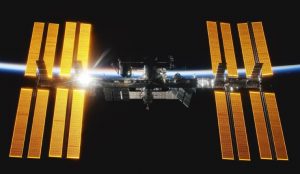Have you ever thought about why satellites seem to be covered in silver or gold foil? We have the answer you’re looking for. It may appear as if they have a covering of precious metal. In actual fact, it’s usually not gold, or even foil for that matter. What we have here is multi-layer insulation or MLI for short. Let’s have a closer look at it below. Then, if you need reliable foiling services, you can trust us.
What is MLI?
 MLI includes lightweight reflective films. They’re assembled into thin layers ranging in thickness. They tend to be polyester films or polyimide with a very thin aluminium coating. Both are kinds of plastics. The precise composition comes down to where the satellite will orbit. What the insulation is safeguarding and how much sunlight it will encounter are also significant.
MLI includes lightweight reflective films. They’re assembled into thin layers ranging in thickness. They tend to be polyester films or polyimide with a very thin aluminium coating. Both are kinds of plastics. The precise composition comes down to where the satellite will orbit. What the insulation is safeguarding and how much sunlight it will encounter are also significant.
The silver and gold colour sheets you spot tend to be a single layer of aluminised polyimide. There is also the silver aluminium side facing in. The yellowish-gold colour of the polyimide on the exterior provides the satellite with the look of being wrapped in gold.
Why use it?
MLI appears on satellites mainly for thermal control. It defends the delicate on-board instruments from space’s extreme temperatures. Depending on the orbit, a satellite can encounter temperatures between below -200ºF and far above 300ºF. Sometimes, they can do so at the same time. What’s more, there’s the high temperatures the onboard instruments can generate. If you need help with something involving real foils, you can use our foiling services.
Insulation in space
MLI doesn’t insulate a spacecraft from convection or heat conduction particularly well. Yet, this doesn’t matter in the near-vacuum of space. With zero air around, radiation stands as the dominant form of heat transfer. MLI works to reflect solar radiation back into space. This keeps the instruments cool enough to work whilst in sunlight. Moreover, it preserves internal temperatures by retaining heat. It protects instruments from the extreme cold when spacecraft moves through shadow.
Another thing to note is that MLI provides a defensive layer against dust. It protects delicate interior sensors and instruments from the tiny particles of space debris.
Gold sheets aren’t employed to cover whole satellite bodies. Even so, real gold is actually crucial for specific satellite components. From gold coating to vapour-deposited gold taping, it provides a number of benefits. For example, the material helps to safeguard against corrosion from X-rays and ultraviolet lights. Furthermore, it works as a long-lasting, reliable electrical contact in onboard electronics.
Additionally, NASA makes use of gold to construct its spacesuits. Thanks to its excellent capacity to reflect infrared light whilst letting visible light in, astronaut visors come with a thin layer of it. It protects their eyes from unfiltered sunlight.
We know how to foil to deliver excellent foiling services
At Foiling Services, we provide foils for decorative and protective applications. Our team has risen to become the foremost choice in this field of work. Not only do we use a wide range of foils, but we understand the sensitive nature of the process too. It ensures we can apply them effectively for various needs.
So, if you’d like to use our foiling services, please let us know. We’re happy to make arrangements for all kinds of needs, including automotive parts, packaging, product displays, and more.
